The Worst of It
Rusty, dirty wheels; I don’t think there’s a tougher task when it comes to restoring a vintage bike. In this case, there’s even a question of whether these wheels are salvageable. You come to a point where you have to ask yourself “is it worth all this hard work?” In this case, I think there’s good reason for just replacing these original wheels, but I just kept cleaning them anyway. I just wanted to at least get some of that rust off, which has eaten away at them for years. Being a heavy pair of 27¼ inch rims with Atom hubs and a lifeless 5 speed freewheel, I’m not loving the job of restoring these ones.
About the Rims
I’d seen lots of these particular rims in the U.S., on old basic French bikes imported in the 1970’s. These Rigida rims have the dimpled side walls, which was a design that was supposed to provide greater friction and stopping power for the brake pads. Interestingly, I’ve found very few of this type of 27¼ rim on bikes sold in France itself. Even the lower end bikes in France were generally sold with lighter 700c rims, so it seems that the 27¼ ‘s were exported more for foreign markets, probably because they were cheaper. The wheels on this Electron were the most basic feature of the whole bike, and a reflection of it being an affordable machine.
The Damage
There was a film of oxidation on the Rigida rims that I was able to clean away with a soft brush. Yet as I removed this top layer of light rust and dust, lurking beneath was the really bad stuff, the dark, irreparable black pitting. The rust had taken hold and had eaten into the finish of the rims, which is a shame because elsewhere the rims actually came back to life with a nice shine. After a labour-intensive hour, the front wheel actually began to look decent, helped by the hubs coming back to a shine. The rear wheel, however, looked like an even bigger job..
Cleaning Tyres
Dirty tyres can make a really nice bike look crap. OK, it may not be the case with black tyres, I admit that, but with black and tan tyres, it’s really important to clean the tan part that always gets grimy. You shouldn’t overlook this important aesthetic feature of a vintage bike. An easy and safe way to clean them is by using a very fine grade piece of steel wool. With gentle brushing ( otherwise you may start damaging the nylon ), the dirt can be cleaned away with warm water and soap, and with just one round of cleaning, your whole wheel just look a lot better.
A Sad End to the Rear Wheel
I like to keep original parts, so when it came to the rear wheel, I did try my best to save it. To be frank, it was a mess; worse, no doubt, than this Peugeot’s sorry story. In fact, I went through the whole process of restoring this savagely beaten rear wheel, only to abandon it right at the very end. Not only did the rims look awful from the heavy pitting, the side wall of the rims, where the pads would engage when braking, were too heavily encrusted with rust. What’s more, the freewheel was heavily weathered too, and the hub didn’t clean up well either. All in all, it seemed I wasted an good hour of my life trying to bring an old, basic wheel back to life.
Samir Something or Other
Just by chance, I had a 27¼ inch rimmed wheel in the back of the shed. I remember taking it off a pretty low end French bike some time ago. Actually, it wasn’t in bad condition at all, and the reason why I just stuck it away amongst the garden furniture is simple: I just don’t like this size of rim on a road bike. Give me a 700c any day of the week. Apart from the spider webs amongst its spokes, the wheel looked a good replacement for the defunct Rigida now destined for the junk bin. It felt heavy, had a bland, thin hub with no branding, and I had to give its spokes a good clean. But it looked a whole lot better than the dire rear wheel that I’d just cleaned in vain. Samir Saminox. Ok, not an inspiring name, but does your rim have a stamp in its metal? This one does!


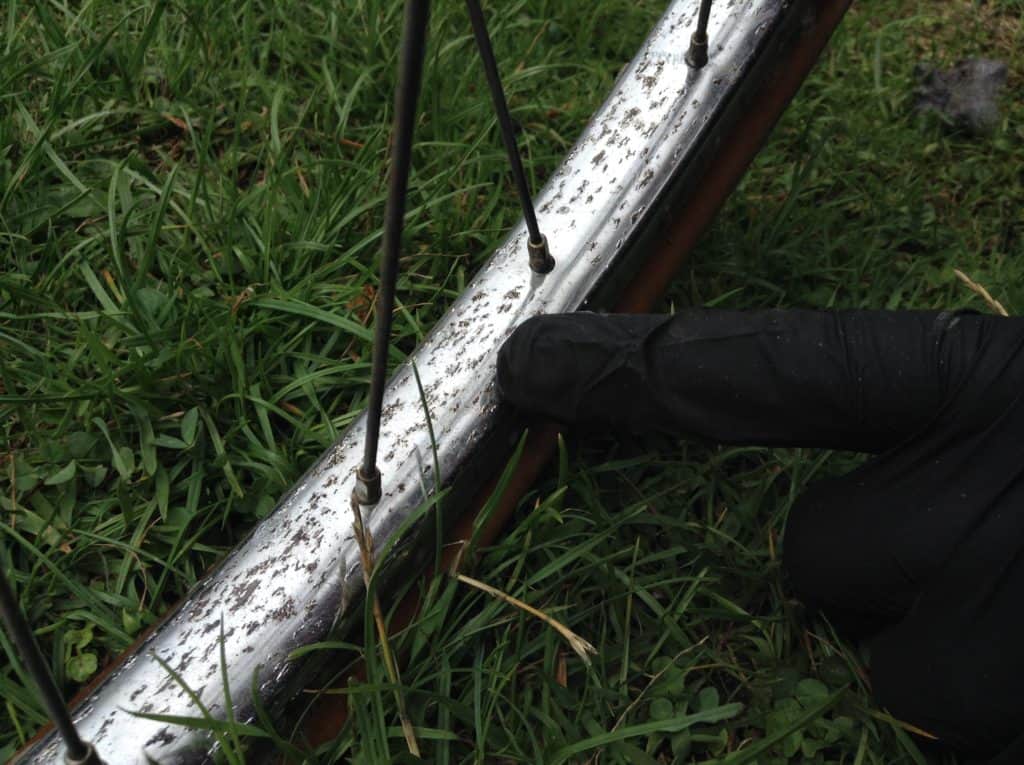
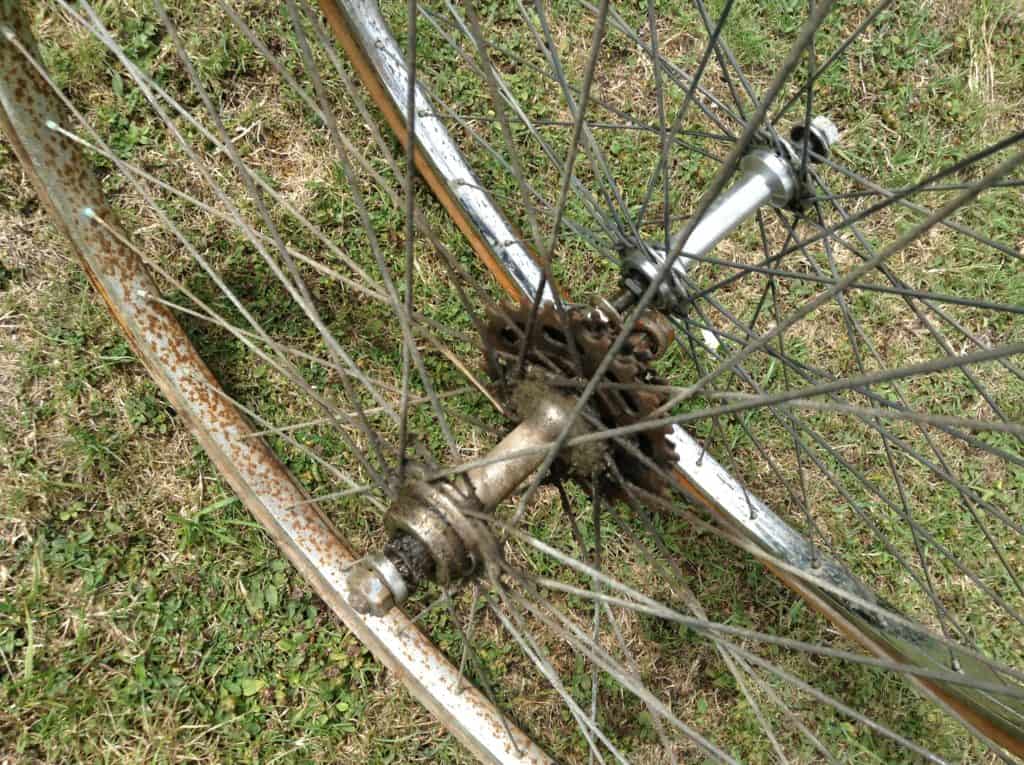
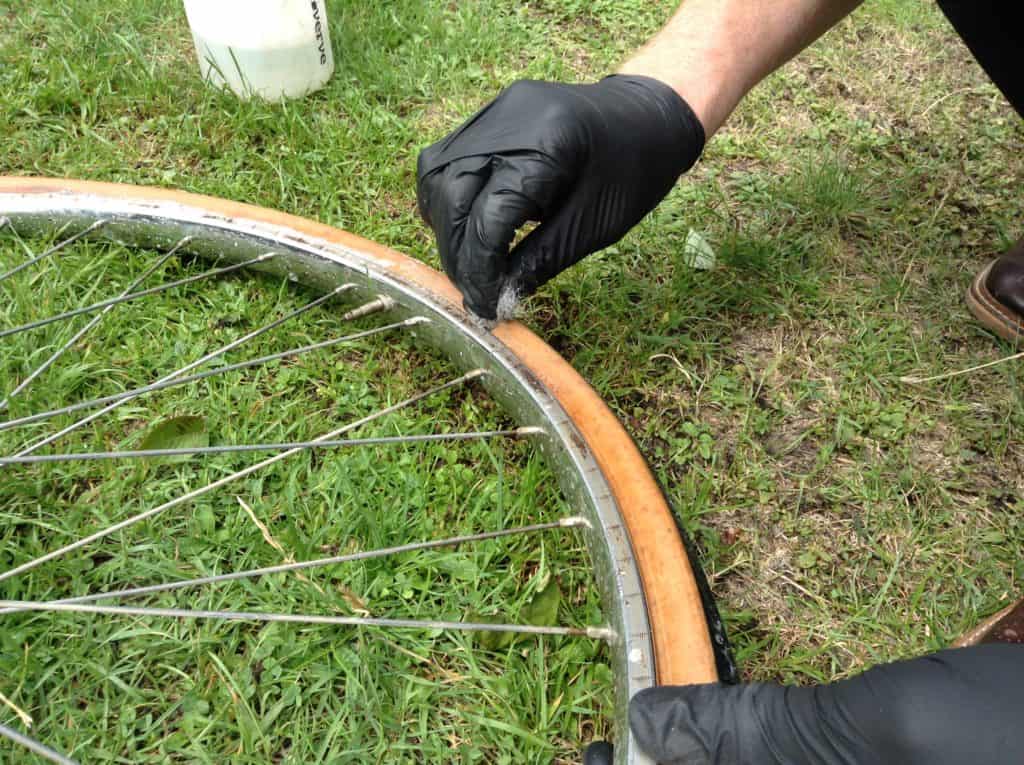
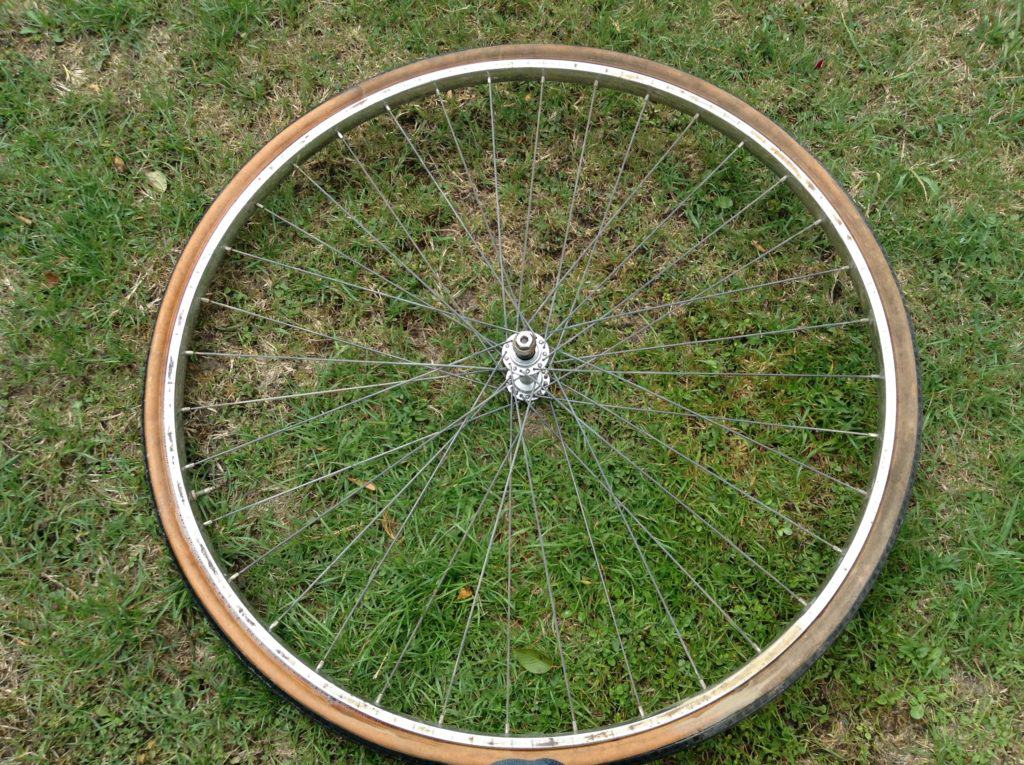
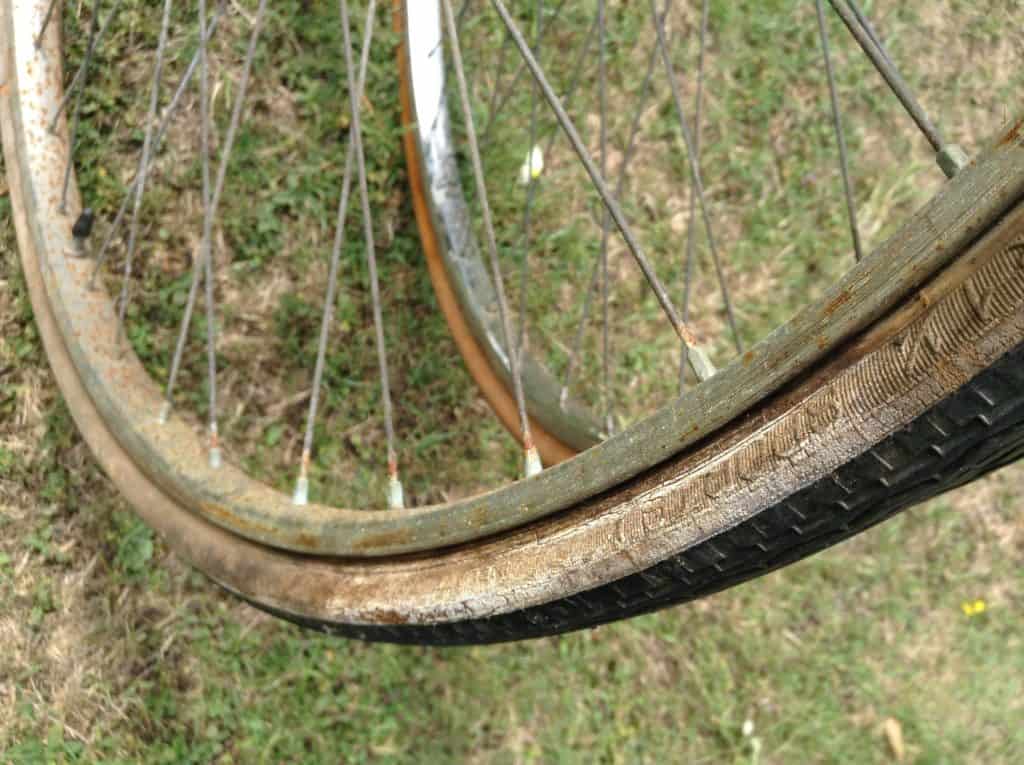
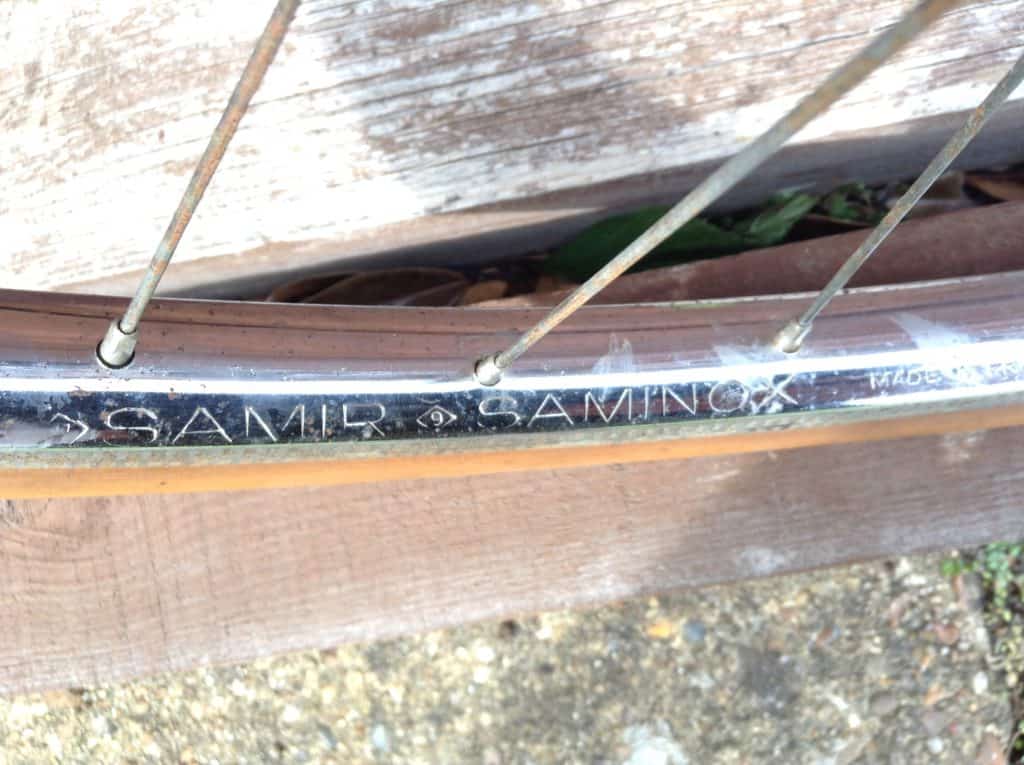
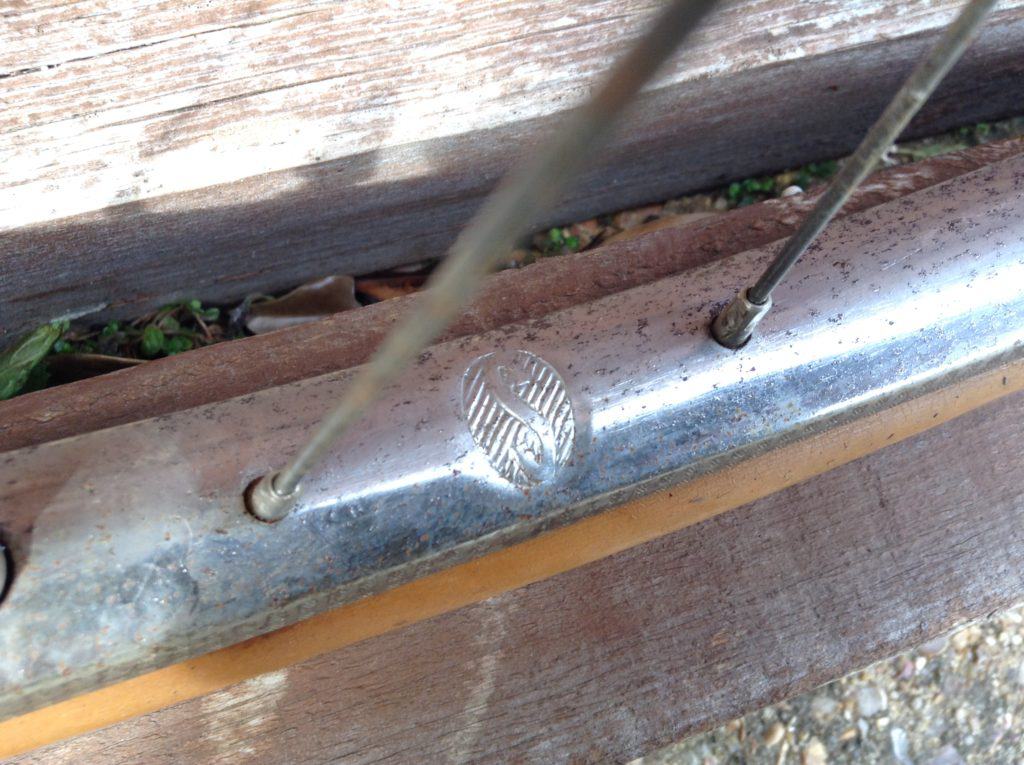
Recent Comments